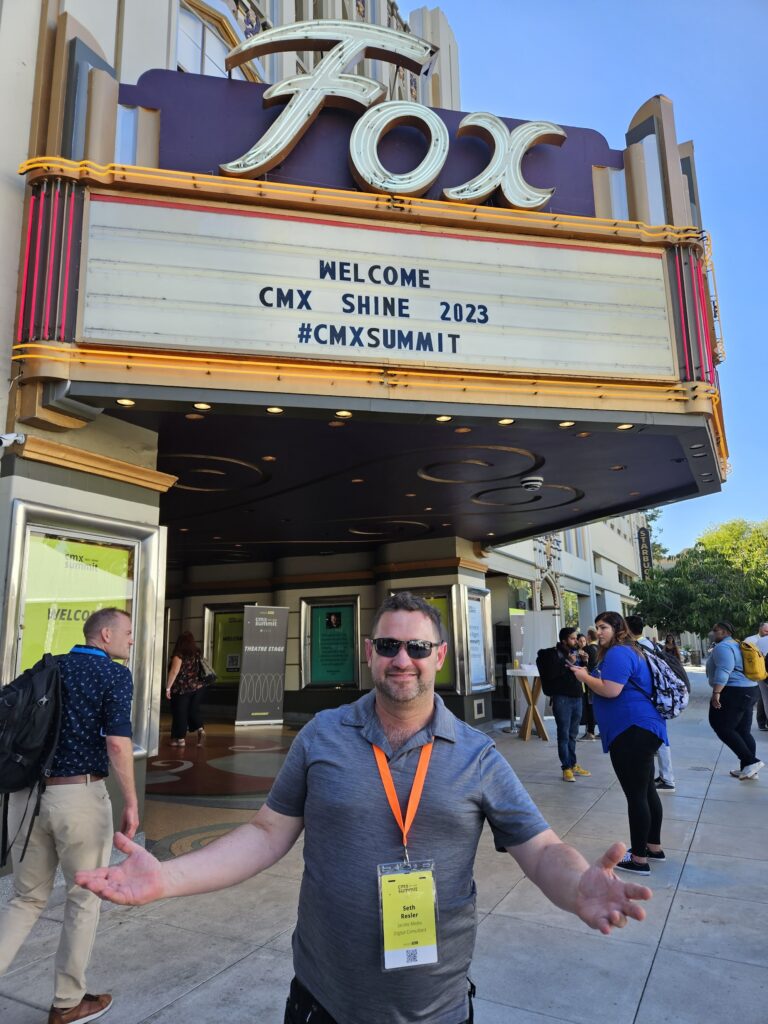
Eight years ago, during my first week at Jacobs Media, I walked into Fred and Paul’s office and told them that I’d like to attend a new conference to see what I could learn. The conference was called Podcast Movement, and it was about to host its second annual event. I didn’t really expect them to say yes, but to my surprise they did.
When I returned from the conference, I told them: “Broadcasters need to see what’s happening in this space.” The following year, we personally invited a few dozen broadcasters to the conference. The year after that, we worked with the conference’s organizers, Dan Franks and Jared Easley, to create a track called “Broadcasters Meet Podcasters.” And the broadcasters did. Today, the major radio companies have a large presence at Podcast Movement, in part because we nudged them into the space.
Earlier this year, I once again asked to be sent to a conference outside of the radio industry so I can go see what broadcasters might be able to learn from it. Since the onset of the COVID-19 pandemic, I have taken a keen interest in community building, especially with the rise in popularity of digital tools that create spaces which allow community members to communicate with one another. These tools include Zoom, Slack, Facebook Groups, Discord, and more. I believe that this class of digital tools is fundamentally different than the content publishing tools that preceded them, such as WordPress, YouTube, Instagram, TikTok, Anchor, and Facebook’s newsfeed.
So last week, I headed out to the CMX Summit in Silicon Valley. CMX is a community of Community Managers (or professionals with similar job duties), and when there isn’t a global health crisis happening, it hosts an annual professional development conference, very much like what Morning Show Boot Camp or Podcast Movement are for their spaces. The main conference took place over two days in the heart of Redwood City. A few hundred people showed up to attend various sessions across three concurrent tracks.
While the conference was notably smaller than Podcast Movement, its attendees displayed the same level of passion. In fact, even though this conference is nearly as old as Podcast Movement, it felt like the early days of Podcast Movement; the attendees are working in a new space that they all believe in, but it still has a lot of growing to do. Even though there were representatives from large companies like Salesforce, ZenDesk, and Canva on stage, the event still had a grassroots feeling to it.
Although attendance was small, a significant number of people traveled from around the world to be there. I met people from Canada, Australia, Russia, and India. While most of them work in the tech industry (especially SAAS or “software as a service”), I did meet some folks who worked in more traditional industries, including a woman who works for a newspaper publisher in Tanzania. I also met Vi Andrews, who is the Community Lead at Ideas United, where she works with freelancing creative professionals from around the world. It was clear that while the tech sector has been the first to embrace the practice of community building, it has applications well outside of that industry.
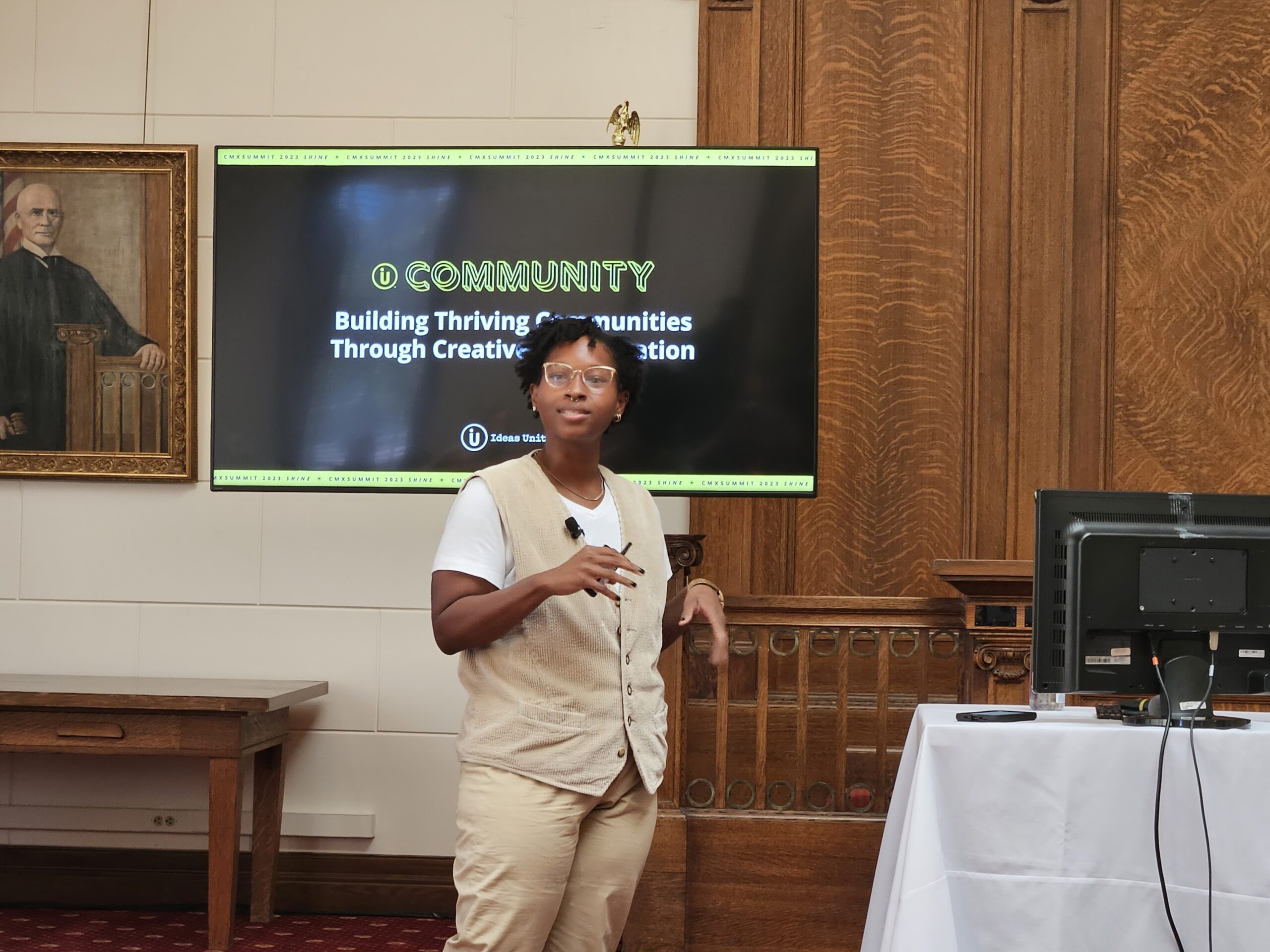
Somehow, I convinced my friend Jacent Jackson, a veteran radio programmer who has been producing branded podcasts for the last several years, to tag along with me. It was nice to have somebody else who could look at the event though “radio” eyes. I asked Jacent what his big takeaway from the conference was, and he told me:
“Community is a buzzword in media circles, so it was fascinating to get perspective from people who are really doing the work. Community management excels at learning what your most engaged customers want and is a terrific way to cement brand affinity. There is cutting edge technology coming from Silicon Valley to help their digital clients build communities to maximize engagement, and these products are frankly out of a typical radio station’s reach.”
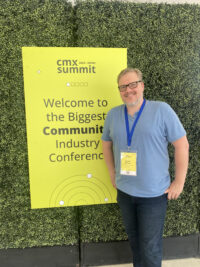
Jacent’s right. I learned a ton at CMX last week, but unlike Podcast Movement eight years ago, I don’t think broadcasters need to start sending their staff to this event. For starters, the job title that most attendees have, “Community Manager,” doesn’t exist yet in the broadcasting industry. And I don’t think radio’s Program Directors or Promotions Directors or Digital Directors would learn much that they could immediately put into practice.
In radio, we are just beginning to say to ourselves, “Gee, maybe this ‘community’ thing is important.” We are only now paying attention as the the word “community” percolates up in our industry, as it did in the meta-analysis of research studies recently conducted by PRPD this year. The CMX conference is way beyond that point. The attendees are actually putting community building strategies into practice, and the speakers have been doing it for years. We aren’t there yet.
But I think it’s where media is inevitably heading. I am often critical of radio broadcasters because too often they ask, “What are other radio stations doing?” when they should be asking, “What are other industries doing?” We spend too much time in our own bubble. Last week, I got to peek outside that bubble.
There are a few people I know who would benefit from attending CMX. For example, this conference is right up the alley of my friend Elsie Escobar, who is the Director of Community and Content at the podcast hosting company Libsyn. Doc Rock, the Community Manager for the livestreaming platform eCamm Live (and a former Hawaii radio personality) would also be a perfect match for an event like this. Both of them are community managers for tech companies, but they are also in the audio content space.
Of all the knowledge I gained at the conference, perhaps the only things that were immediately applicable to radio broadcasters came up in a session about producing live events hosted by event strategist Will Curran. I’ll take a deeper dive into that session in a blog post next week.
For now, I want to offer some general takeaways about community building from the conference. Let these concepts sit in the back of your brain a germinate. You’ll come back to them at some point.
Lesson 1: Smaller Can Be Better
In the broadcasting industry, we have be trained to believe that bigger is always better. We all want the largest audience possible because we can turn that into more profit. Of course, the internet has complicated this thinking. After all, we’re bound by the geographic reach of our radio transmitters, while internet companies can reach people around the world. To compensate, we’ve tried to figure out how we can compete, either through technical tactics (like online streaming) or boardroom tactics (like corporate consolidation). But what if we’re thinking about it wrong?
In her session, Martha Patzer, who was the Head of Community for Neeva, an AI-powered search engine that aimed to rival Google before it was acquired, told the story of how she deliberately chose to go small. When she started her job, her boss asked her to “10X” the community in twelve months. Patzer, who has a background in politics, not tech, recognized that the key to community building lies in the quality of the relationships, not the quantity.
She borrowed a political concept known “Relational Organizing,” which has shown that the word of a friend is more persuasive than advertising. (If your salary comes from a company that sales ads to generate revenue, pay attention.) She explained that while “we should go smaller” is not the kind of thing that the CEOs of Silicon Valley startups typically want to hear, it proved to be the right strategy when building a community of customers.
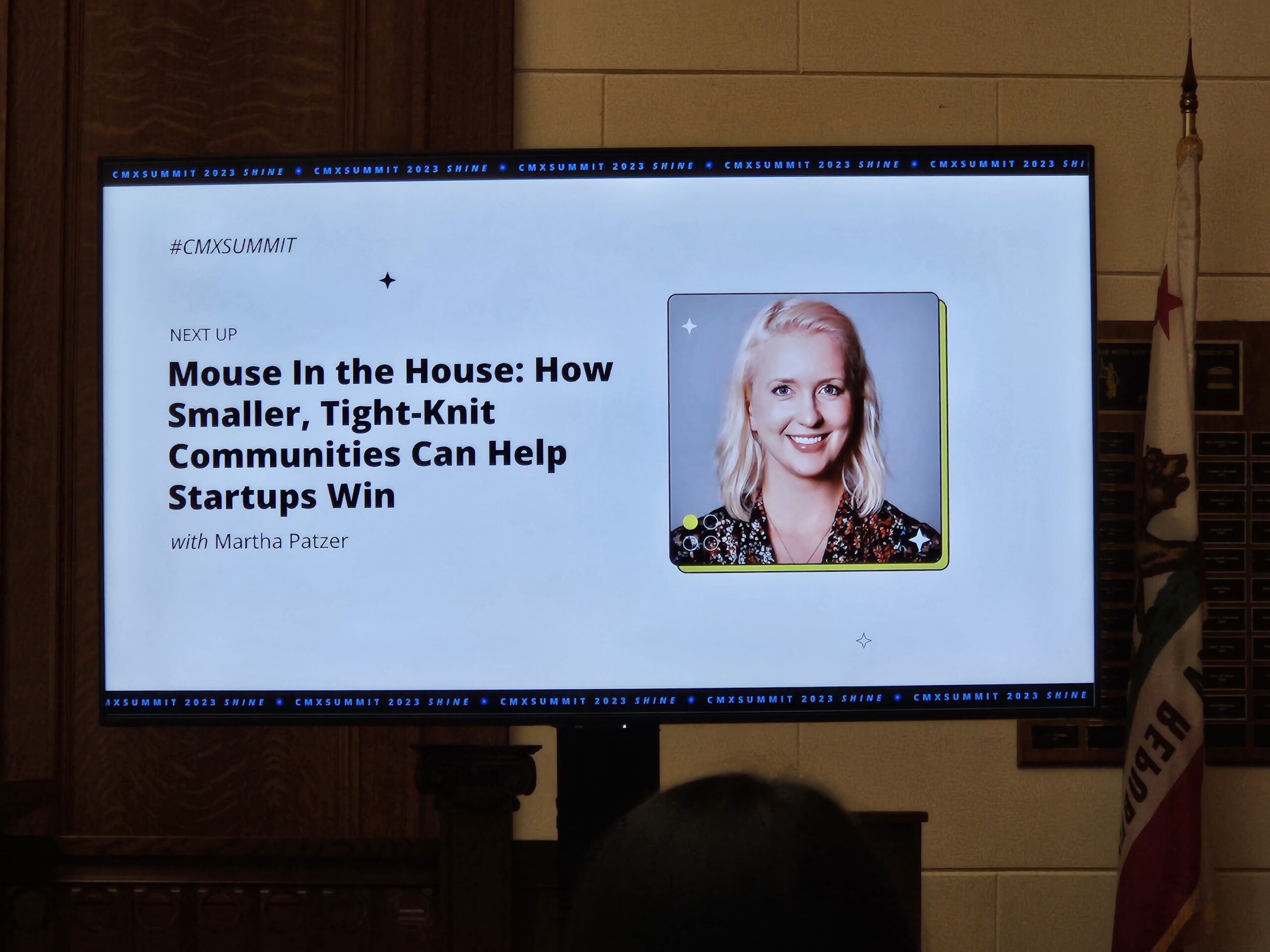
There’s a saying in the community space: “You have to do things that don’t scale.” What makes communities work is that the members feel connected to each other. When communities get too large, those connections can weaken.
One speaker talked about “The Auditorium Effect,” the fact that members get quieter as the number of people in the community grows larger. When this happens, the communities need to subdivide into smaller groups to stay effective. In one session I attended, we discussed how to recognize when a community needs to be subdivided to keep the members engaged.
In my past blog posts on the topic of community, I have emphasized the difference between a community and an audience. With audiences, you generally want to attract the most people; with communities, you want to attract the right people. This means that smaller can often be better.
Lesson 2: Communities Lead to Crowdsourcing 2.0
For most companies, the practice of community building began in the Customer Success department. SAAS companies discovered that instead of having a team of paid staffers answer every support ticket, they could cut costs by creating a space where customers could answer each others’ frequently asked questions.
Over time, these companies discovered additional benefits from having a community. For example, community members would be the first to ask companies for new features, enabling companies with robust communities to respond to the marketplace faster. As one speaker pointed out, a community is like a focus group that you don’t have to pay to tell you what they think.
But sometimes, the community members will do more than just come up with a new idea for a product. Sometimes, they’ll actually do the work, too!
Tiago Forte, the author of Building a Second Brain, talked about how communities have taken crowdsourcing to a new level — let’s call it “Crowdsourcing 2.0.” With Crowdsourcing 1.0, the crowd would come up with solutions to problems, but it was up to the business to implement those solutions. Because the digital tools that people have access to have gotten more powerful, the crowd can now actually create the solutions, too.
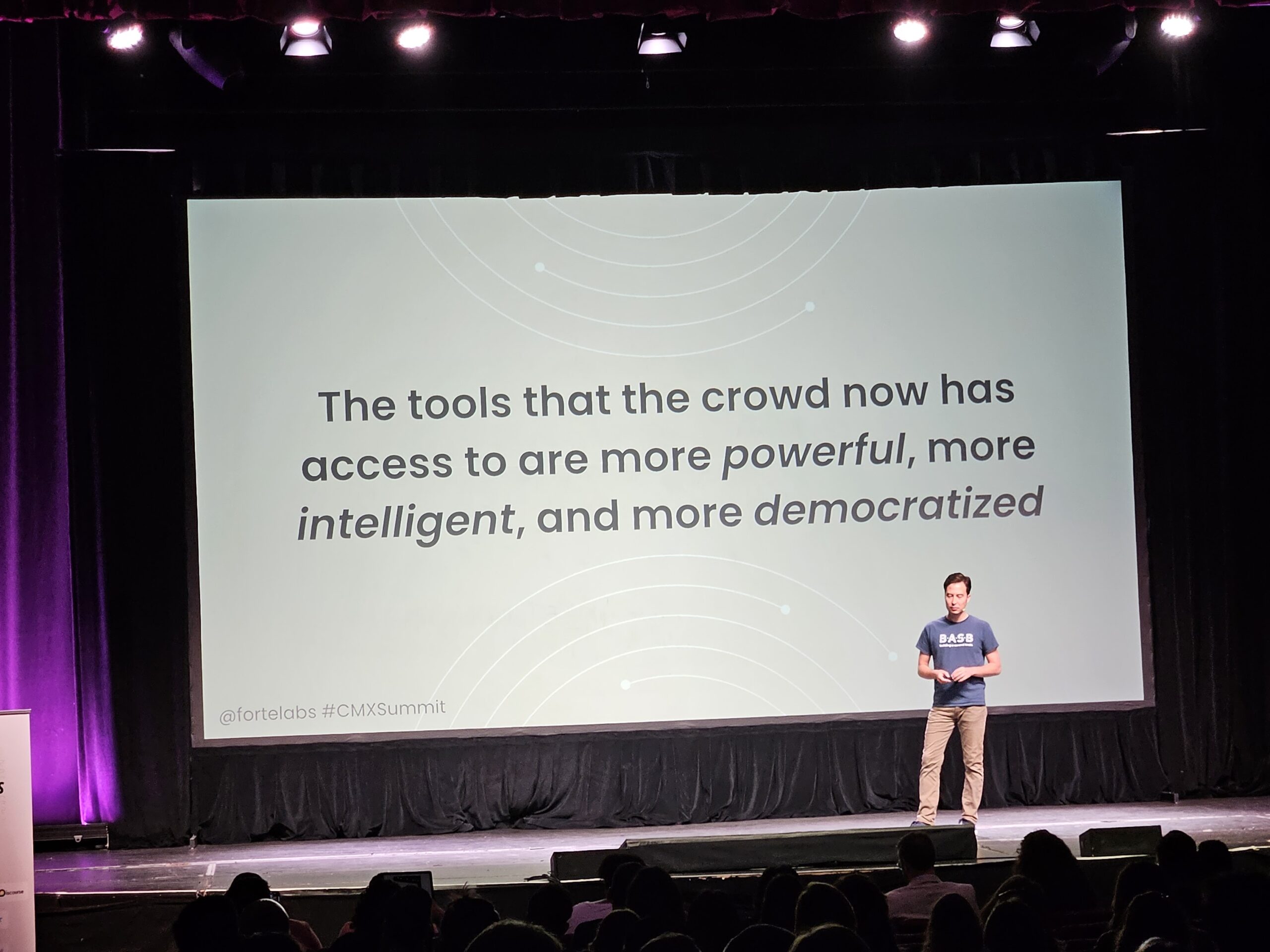
A good example of this came from Monica Silvestre of Canva, the graphic design software company. When Canva invited their community members to create templates that could be shared with other users, the number of Canva templates available skyrocketed way beyond what the company’s staff could produce on its own. What’s more, these creators loved designing these templates for Canva; it gave them a sense of purpose.
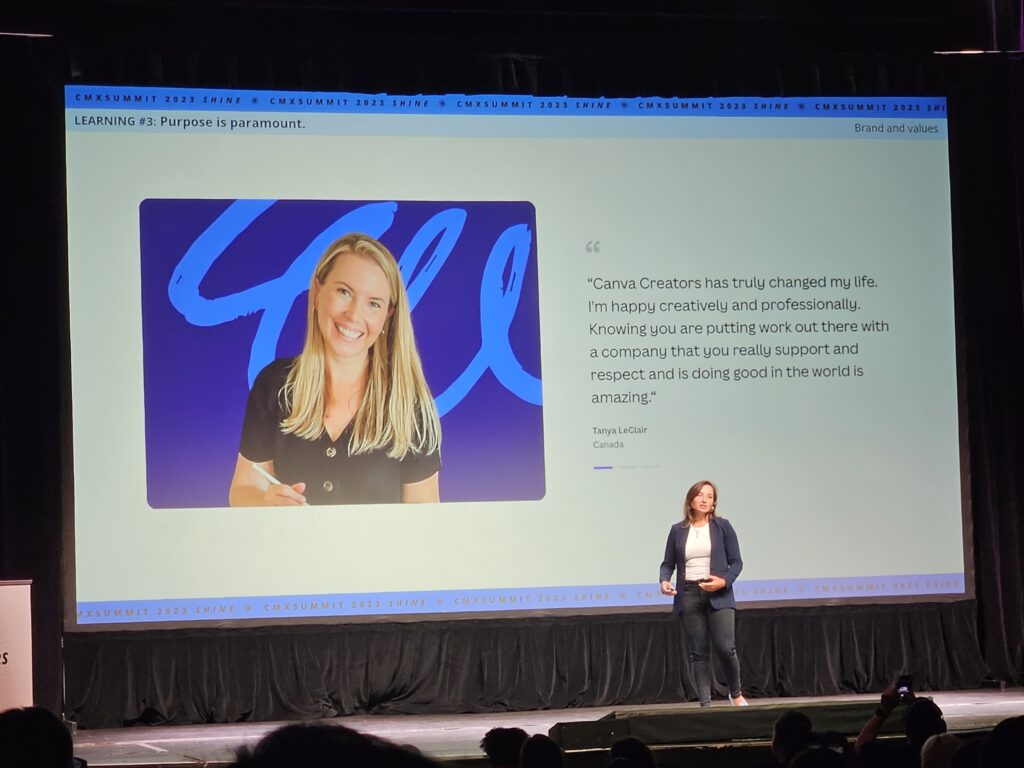
Radio broadcasters could look to build communities and then empowering members to do things that benefit the radio station. For example, you could envision a rock radio station that builds a community of local musicians, and that this community then helps a local music show produce live showcases under the station’s banner.
Lesson 3: Proving ROI is Hard
As professionals in the audio business, we know how hard it can be to prove ROI, especially when compared to digital tools like Google Analytics that make it so easy to track clicks, page views, and goal conversions in non-audio spaces. Community Managers have a similar plight, but their challenge is to prove the ROI of community building within their organization, not to outside clients. Frankly, it’s hard to measure the “connections” you foster between people, and even harder to show how those connections impacts a company’s bottom line. A common theme at the conference was the challenge Community Managers have in showing the value of their efforts to the C-Suite without an established set of metrics.
In fact, there were multiple sessions dedicated to this topic. Sam Hepburn leads a community of cybersecurity developers for Snyk. In her session, “Building a Culture of Community: From the C-Suite to the Front Line,” she described her time-intensive process of sitting down with the heads of all the departments in her company on a regular basis, understanding their pain points and key performance indicators, and repeatedly showing them how the community could help them in their job.
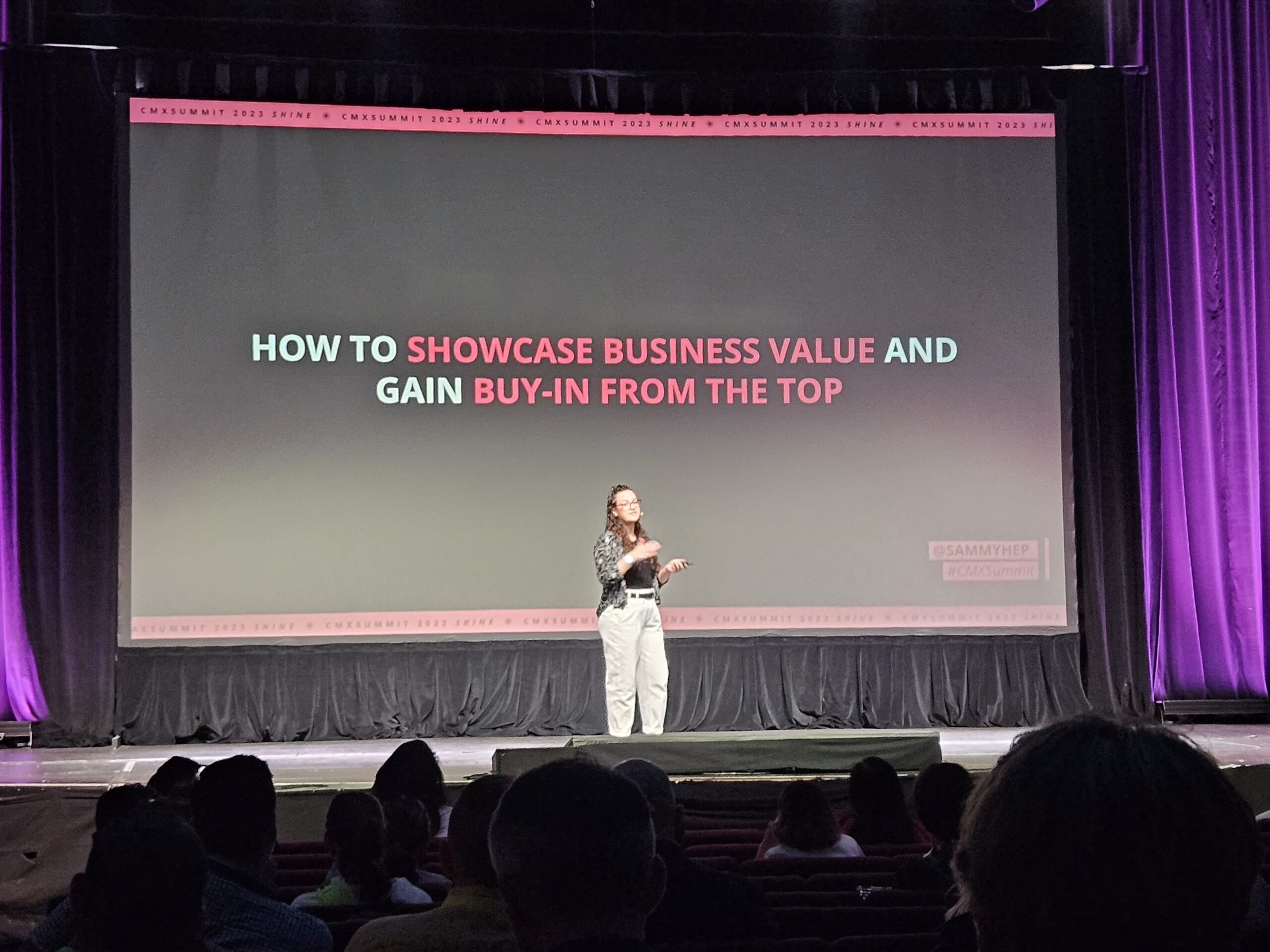
The bottom line is that within most companies, community building is still in its infancy. The companies that are finding success with communities are often the ones that have buy-in from the top and allocate resources to it. But, as Martha Patzer pointed out, as Silicon Valley’s venture capital is evaporating due to high interest rates, Community Managers that can’t show ROI are finding themselves in danger. Building community is not an endeavor for the faint of heart. If your company isn’t committed for the long haul, this isn’t an endeavor to take on.
After the conference, I asked Jacent Jackson, a radio guy with no prior exposure to the world of community building, what lessons he through broadcasters could learn from the space. He told me:
“Lead with curiosity. Use the free social media tools available to you today to ask questions and build discussions. Moderate it into a place people want to hang out. Prioritize meaningful dialogue over raw reach. Then hold those conversations in mind to create more relatable content.”
He’s right. Even though the radio industry is just starting to wake up to the world of professional community building, there are small ways in which we can all start to experiment with these concepts. I also recommend starting by reading one of these books:
- The Business of Belonging by David Spinks
- Building Brand Communities by Carrie Melissa Jones & Charles Vogl
- Belonging to the Brand by Mark Schaefer
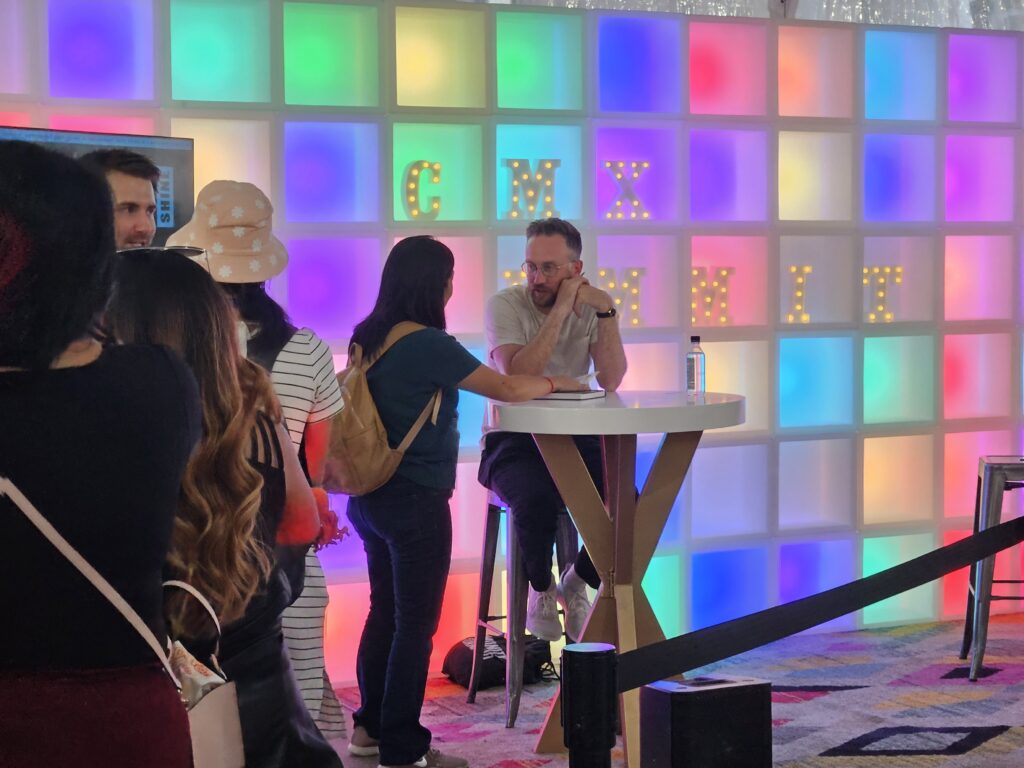
Community at the NAB Show in New York
Congratulations to the team at CMX on a wonderful event. I learned a ton and really enjoyed all of the community professionals that I met. If you’re a broadcaster and you’d like to learn more about community building, I will be speaking on the topic at the NAB Show in New York later this month. Please join me!
- A Simple Digital Treat to Thank Your Radio Listeners This Thanksgiving - November 13, 2023
- Interview Questions When Hiring Your Radio Station’s Next Digital Marketing Manager - November 6, 2023
- A Radio Conversation with ChatGPT: Part 2 – Promotions - October 30, 2023





Leave a Reply